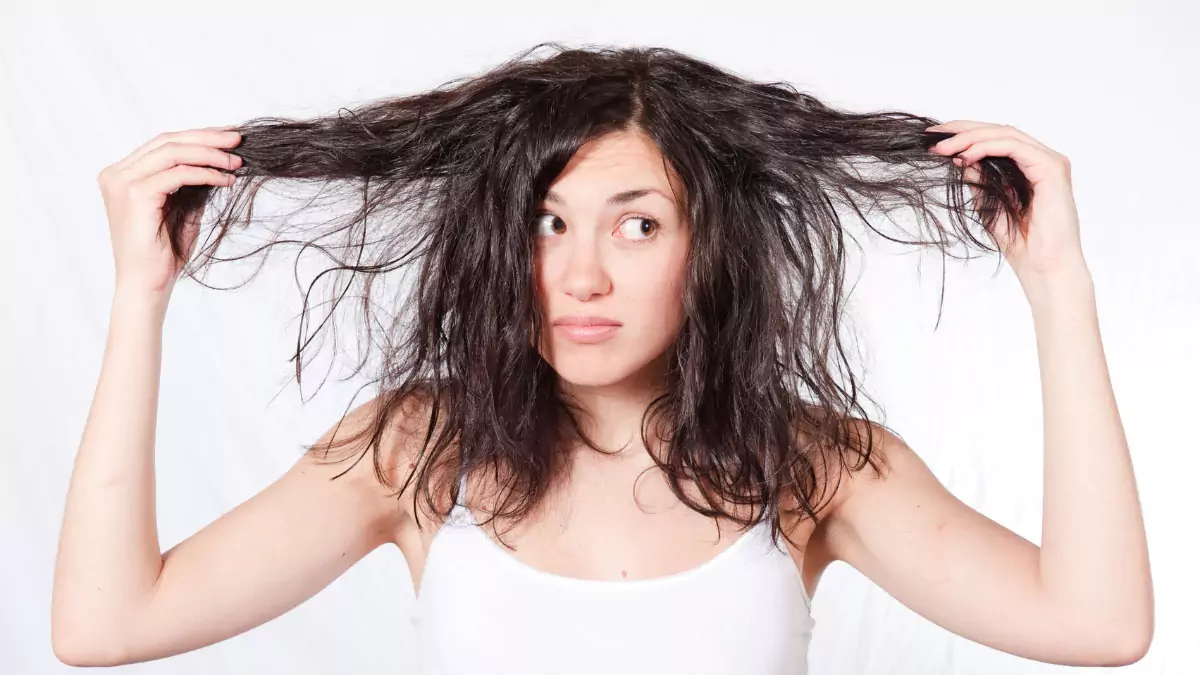Understanding the Dilemma: My Hair is Naturally Curly but Won’t Curl Anymore
While naturally curly hair is undoubtedly stunning, it can be a struggle to keep it looking its best.
If you find that your once-curly hair is no longer cooperating, there are several approaches you can take to revive those curls.
By implementing a few tried-and-true techniques, you can reclaim your beautiful curls.
From adjusting your haircare routine to exploring new styling techniques, there’s hope for returning the bounce and definition to your naturally curly locks.
Continue reading the article to answer the dilemma of my hair is naturally curly but won’t curl anymore.
My hair used to be curly, but why is it not curling anymore
There are several reasons why your hair is not curling anymore.
Some of them include:
Damage and Dryness

Factors such as excessive heat styling, chemical treatments, and harsh hair practices can damage the hair shaft, making it difficult for curls to form.
Dryness can also affect curl patterns, so proper hydration is essential.
Insufficient Moisture
Curly hair tends to dry easily and needs enough moisture to avoid problems like breakage, split ends, frizz, and roughness.
If your hair lacks moisture, it may struggle to hold its curl.
Look for hydrating products and consider incorporating deep conditioning treatments into your routine.
Wrong products
Using the wrong hair products can negatively impact your curls.
Certain products can strip the hair of natural oils or weigh it down, leading to a loss of curl.
Choose products specifically designed for curly hair and avoid overusing heavy styling products.
Heat Damage
Excessive use of heat-styling tools like flat irons or curling irons can cause heat damage, making it harder for your hair to curl naturally.
Embrace heat-free styling methods like air drying or using a diffuser attachment on your hairdryer.
Hormonal Changes and Health Conditions
Hormonal fluctuations during puberty, pregnancy, or menopause can affect hair texture and curl pattern.
Health conditions or nutritional deficiencies can impact the overall health of your hair, potentially altering its curl.
What to do if my hair is naturally curly but won’t curl anymore
If your curly hair is not curling anymore, you can try a few things to get it to curl.
Some of them include:
Use the Right Products
Choose products specifically made for curly hair and avoid harsh ingredients like sulfates.
Look for moisturizing treatments with coconut oil, shea butter, or olive oil to restore hydration and nourish your hair.
Proper Techniques
Gently detangle your hair using a wide-tooth comb or fingers to prevent breakage.
Avoid using hot tools and let your hair air dry or use a diffuser attachment on your hairdryer for gentle drying.
Moisture Restoration

Use moisturizing treatments to bring moisture back to your dry or damaged hair. These treatments replenish natural oils, improve hair health, and enhance curls.
Include deep conditioning masks, leave-in conditioners, and moisturizing hair oils in your routine to moisturize your curls.
Experiment with Hairstyles
Try different hairstyles like braids or twist-outs to enhance your curl definition and add volume to your hair.
These techniques can revive your natural curls, making your hair more versatile and stylish.
Seek Professional Advice
Consult a hair care professional if you are struggling to revive your curls.
They can provide personalized guidance and recommendations based on your curly hair needs.
Remember, caring for curly hair requires patience and experimentation.
Finding the right products and techniques that work for you may take time.
Be gentle with your hair, prioritize moisture, and embrace the natural beauty of your curls.
Takeaway
If your natural curls are no longer forming, it could be due to damage, dryness, product incompatibility, heat damage, hormonal changes, or underlying health conditions.
Identifying and addressing the specific cause can help you revive your curls and restore their natural beauty.
To revive your curls, focus on using curl-friendly products, practice proper hair care, avoid heat styling, and seek professional advice.
Restoring your curls may take time and patience, but you can bring back their natural beauty with the right approach.
Frequently Asked Questions
If my hair is naturally curly but won’t curl anymore, if I cut it, will it come back?
While cutting your hair won’t directly make your curls return, it can help remove damaged ends and promote healthier hair growth. Maintaining a proper haircare routine, using suitable products, and using styling techniques can help restore your natural curl pattern.
Why did my natural curls go away?
There are different reasons why natural curls may disappear. These can include damage from heat or chemicals, not taking care of your hair correctly, hormonal changes, aging, and genetics. Each person’s hair is unique, and these factors can affect your curl pattern over time.
How do I reactivate my natural curls?
To reactivate your natural curls, start by using curl-friendly products and techniques. Use a moisturizing shampoo and conditioner, apply curl-enhancing effects, and avoid heat styling. Scrunch your hair while damp, try different styling methods, and consider deep conditioning treatments to restore moisture and definition to your curls.
Is it possible to revive curls?
Yes, it is possible to revive curls. By using the right products, avoiding heat styling, and practicing proper hair care, you can help restore moisture and definition to your curls. Experiment with different techniques and be patient, as it may take time for your curls to return fully.
WowRx uses only high-quality sources while writing our articles. Please read our content information policy to know more about how we keep our content reliable and trustworthy.






